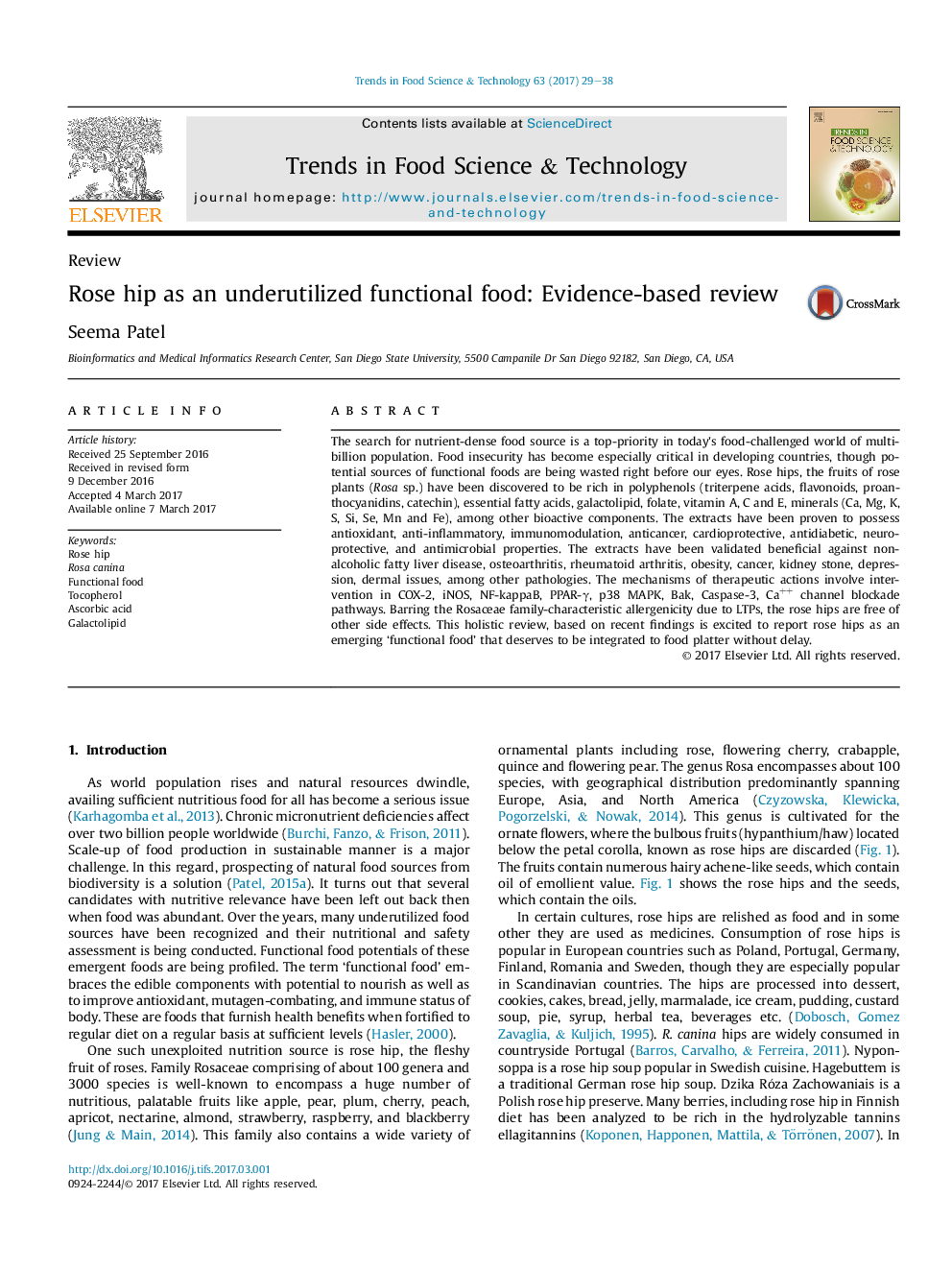| Article ID | Journal | Published Year | Pages | File Type |
|---|---|---|---|---|
| 5523669 | Trends in Food Science & Technology | 2017 | 10 Pages |
â¢In the face of food insecurity, rose hip appear to be a functional food candidate.â¢Rich in polyphenols, essential fatty acids, vitamin, and minerals, rose hips are nutritive.â¢Antioxidant, immunomodulation, anticancer, and other bioactive properties of rose hips have been validated.â¢This review can stimulate public and researcher interest, which can contribute towards food security.
The search for nutrient-dense food source is a top-priority in today's food-challenged world of multi-billion population. Food insecurity has become especially critical in developing countries, though potential sources of functional foods are being wasted right before our eyes. Rose hips, the fruits of rose plants (Rosa sp.) have been discovered to be rich in polyphenols (triterpene acids, flavonoids, proanthocyanidins, catechin), essential fatty acids, galactolipid, folate, vitamin A, C and E, minerals (Ca, Mg, K, S, Si, Se, Mn and Fe), among other bioactive components. The extracts have been proven to possess antioxidant, anti-inflammatory, immunomodulation, anticancer, cardioprotective, antidiabetic, neuroprotective, and antimicrobial properties. The extracts have been validated beneficial against non-alcoholic fatty liver disease, osteoarthritis, rheumatoid arthritis, obesity, cancer, kidney stone, depression, dermal issues, among other pathologies. The mechanisms of therapeutic actions involve intervention in COX-2, iNOS, NF-kappaB, PPAR-γ, p38 MAPK, Bak, Caspase-3, Ca++ channel blockade pathways. Barring the Rosaceae family-characteristic allergenicity due to LTPs, the rose hips are free of other side effects. This holistic review, based on recent findings is excited to report rose hips as an emerging 'functional food' that deserves to be integrated to food platter without delay.
Graphical abstractDownload high-res image (270KB)Download full-size image
